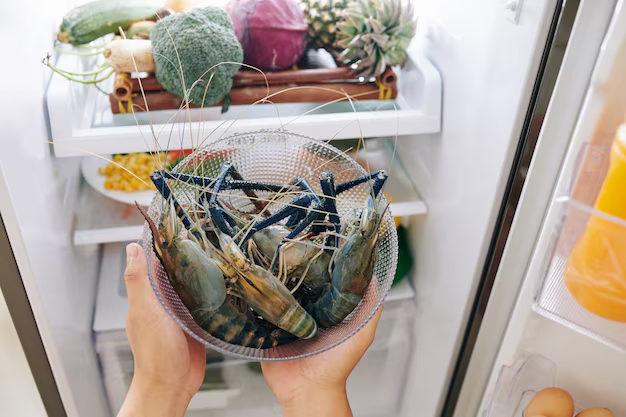How Long Is Your Sauerkraut Safe in the Refrigerator?
Sauerkraut, with its tangy flavor and crunchy texture, is a kitchen staple for many looking to enhance dishes or enjoy a probiotic boost. Often found gracing hot dogs or complementing hearty meals, this fermented cabbage is both versatile and healthy. But once opened, how long can you realistically keep sauerkraut in the refrigerator without it losing its quality or safety? Let’s dive deep into the world of sauerkraut storage, providing you with practical tips and insights that ensure you make the most of this fermented favorite.
Understanding Sauerkraut: A Brief Overview
What Is Sauerkraut?
At its core, sauerkraut is finely cut cabbage that has been fermented by various lactic acid bacteria. This process not only grants it a long shelf life but also adds a distinctive sour taste. Traditionally, it’s enjoyed in many cuisines around the globe, notably in German and Eastern European dishes.
Benefits of Fermentation
Fermentation is as much about flavor as it is about health. The process of fermenting cabbage into sauerkraut releases probiotics, beneficial bacteria that aid digestion and boost gut health. Additionally, the fermentation process can enhance the nutritional profile, increasing vitamins like vitamin C and K.
Storing Sauerkraut: The Basics
How Long Does Sauerkraut Last?
The lifespan of sauerkraut depends largely on how it's stored. If properly refrigerated, unopened sauerkraut can last for months beyond its expiration date. Once opened, it can remain in good condition for several months if kept cool and submerged in its brine.
Sauerkraut Storage in the Refrigerator
To ensure sauerkraut remains fresh and safe to consume, store it in the refrigerator at a consistent temperature, ideally below 40°F (4°C). This cold environment is crucial to maintaining its texture, flavor, and probiotic benefits.
Use Proper Storage Containers
To maximize freshness after opening, transfer your sauerkraut into an airtight container if it's not already in one. This prevents exposure to air, which can lead to spoilage.
Recognizing Spoilage: When to Toss Your Sauerkraut
Visual and Smell Checks
Before consuming, always visually inspect and smell your sauerkraut:
- Color Changes: Fresh sauerkraut has a light, off-white color. If it appears brownish or has developed mold, it's time to discard it.
- Smell: Sauerkraut should have a pleasantly sour aroma. A putrid or off smell indicates spoilage.
Texture and Taste
While sauerkraut is naturally crunchy, any slimy texture can be a red flag. If the taste seems off, it’s best not to take any chances.
Pro Tips for Longer-Lasting Sauerkraut
Storing sauerkraut correctly extends its shelf life. Here are some practical tips to keep your sauerkraut fresh for longer:
📌 Quick Tips for Sauerkraut Storage
- Keep It Submerged: Always ensure your sauerkraut is fully submerged in its brine. This prevents air exposure, which can lead to spoilage.
- Airtight Containers: Use airtight jars or containers to minimize air exposure.
- Maintain a Cold Environment: Consistently keep sauerkraut in a cold spot in your refrigerator.
- Cook It: If you’re nearing the end of its shelf life, considering incorporating it into a recipe that involves cooking, like stews, where slight changes in texture might be less noticeable.
Related Sauerkraut Topics: Broaden Your Culinary Horizons
Creative Uses for Sauerkraut
While traditionally served as a side, sauerkraut’s tangy punch makes it ideal for a variety of creative dishes:
- Sandwich Topper: Adds zing to Reubens or other sandwiches.
- Salad Booster: Mix it with fresh veggies for a probiotic-infused salad.
- Soup Stir-in: Add depth to soups or stews.
Recipe Inspirations
If you're eager to experiment in the kitchen, consider these sauerkraut-infused recipes:
- Sauerkraut and Sausage Casserole
- Pierogi with Sauerkraut Filling
- Sauerkraut Pancakes
DIY Sauerkraut: Ferment at Home
Homemade sauerkraut can be an exciting and rewarding venture. All you need is cabbage, salt, and patience!
Simple Steps to Make Your Own
- Select Quality Cabbage: Firm and fresh heads work best.
- Thinly Slice: Fine shreds allow for even fermentation.
- Salt It Well: Proper salting ensures good fermentation.
- Pack and Weight: Maximize brine coverage by using weights.
- Wait and Taste: After 1-4 weeks, it should achieve the desired sourness.
The Versatile Nature of Sauerkraut
Sauerkraut’s longevity and versatility cannot be overstated. Whether you're enjoying it straight from the jar or as part of a more elaborate meal, understanding how to store it correctly ensures you get the most from every bite. Beyond its shelf life, explore the myriad of ways it can enrich your culinary endeavors. As with any perishable item, regular checks for signs of spoilage ensure your health and safety. Embrace the tangy world of sauerkraut and elevate your everyday dishes with this probiotic powerhouse.
